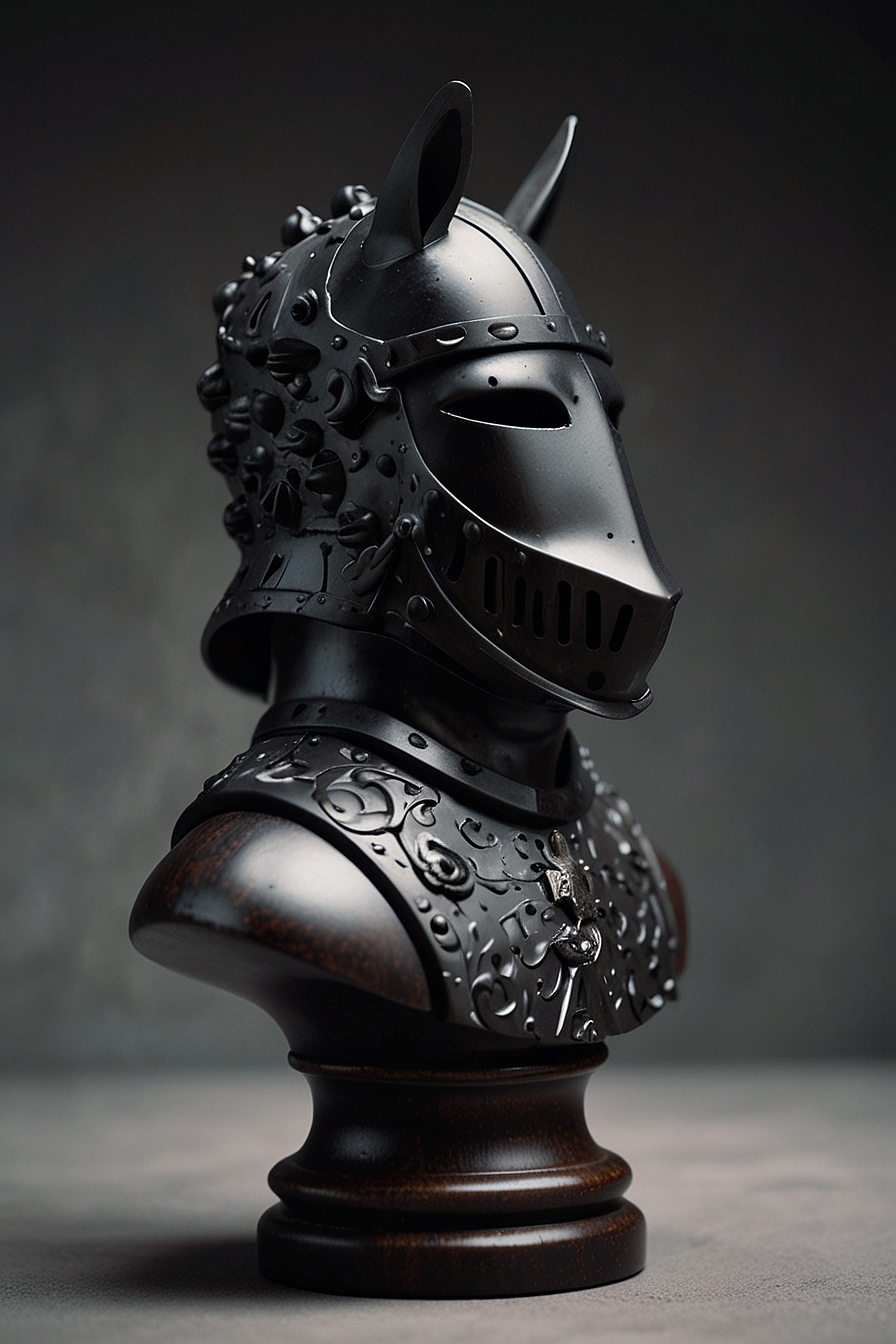Piececlopedia: Centaur
Historical notes
The Centaur has been used in Typhoon and Jupiter by Adrian King, who calls it a Centaur, because it can move as a Man or as a Horse (Knight). It is also called a Centaur by fairy problemists. This piece can be found in these other games under a variety of different names:
- Courier-Spiel by Albers, 1821: (Councellor)
- Renniassance Chess by Eric V. Greenwood, 1980 (Page)
- Royal Court by Sidney LeVasseur, 1998 (Crowned Knight)
- Cobra Chess by Derick Peterson, 1998 (Duke)
- Jupiter by Adrian King, 1999 (Centaur)
- Fantasy Grand Chess by Peter Hatch, 2000 (Wolf Rider)
- Kung Fu Chess by Tim Bostick, 2001 (Tiger)
Fergus Duniho has used a royal version of a Centaur in several variants. He has called it a Knight King in Cavalier Chess and Grand Cavalier Chess, where it is the sole royal piece. And he has called it an Eques Rex in Fusion Chess and several hybrids of this game, such as the triple-hybrid game Thunder Chess. In these games, it is one of four possible royal pieces. The royal Centaur is really a compound of a King and a Knight.
Movement
The Centaur is a compound piece that moves as Man or Knight. Since a Man is itself a compound of Wazir and Ferz, a Centaur moves as a Wazir, Ferz, or Knight. In other words, it moves one space in any direction, or it leaps as a Knight. It captures in the same way that it moves.
Movement diagram

In this diagram, the blue dots show how it moves as a Knight, and the green dots show how it moves as a Man.
Checkmating
This piece can generally force checkmate against a bare king, with the help of its friendly king. Try it!
Alternate Images
Click on an image to view the full piece set it belongs to.
| Royal Centaur | |
|---|---|
 |
|
AI Art
Because a centaur has the upper body of a human and the lower body of a horse, it is hard to represent it accurately without using a full figurine piece, such as depicted here.

For a more compact piece that would work well with Staunton pieces, it helps to move away from a literal representation of a centaur and instead portray the bust of someone with both horse and human features. In a literal sense, this might be a reverse centaur or a were-horse, but at least it gets across the idea of a centaur better than a more human-like bust of a centaur would. Here are a few pieces generated with this kind of depiction:

.jpg)
.jpg)
Along a similar vein, we may have a horse wearing a helmet.
.jpg)
Or taking inspiration from the knight in Lewis Carroll's Through the Looking-Glass, we could use a knight in a horse-shaped helmet.

.jpg)
Written by Fergus Duniho and Peter Aronson. Diagram by Sergey Sirotkin.
WWW Page Created: 15 December 2001; Last Updated 16 December 2001.
